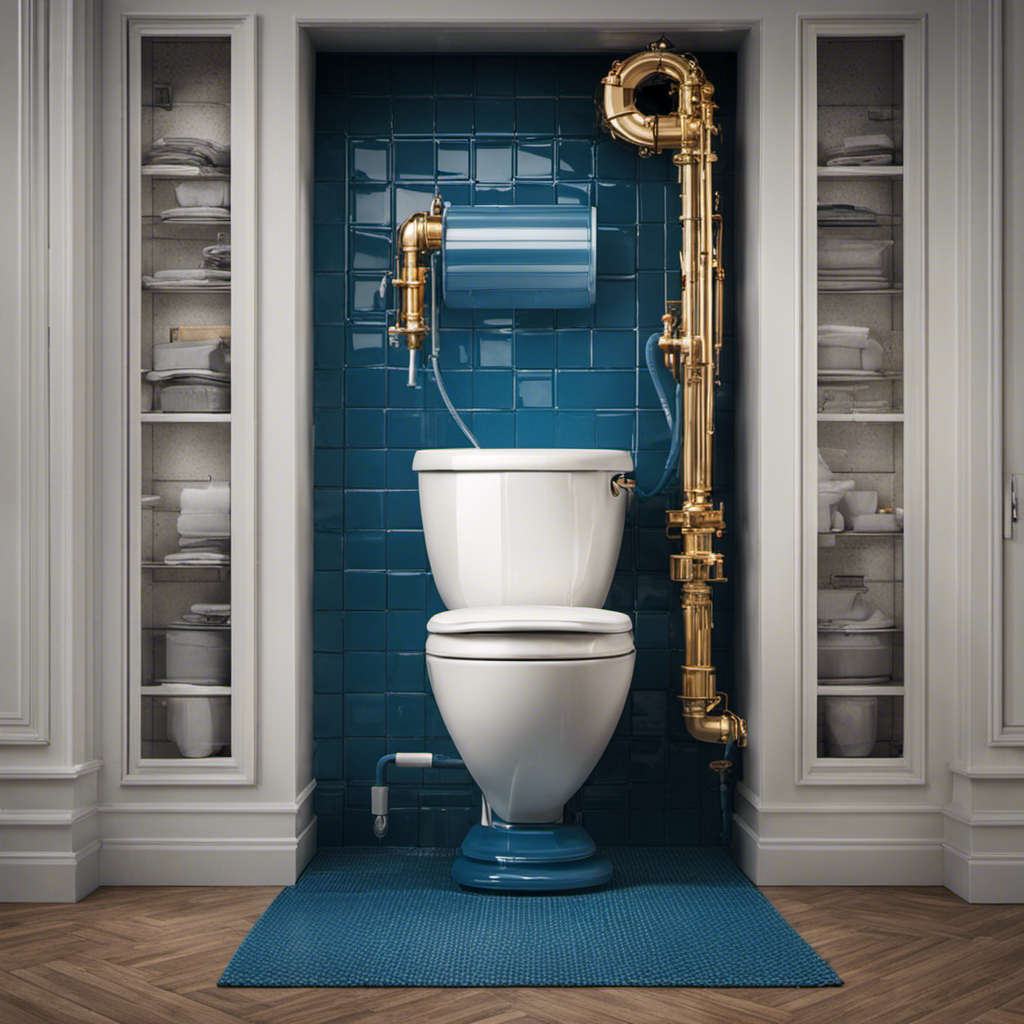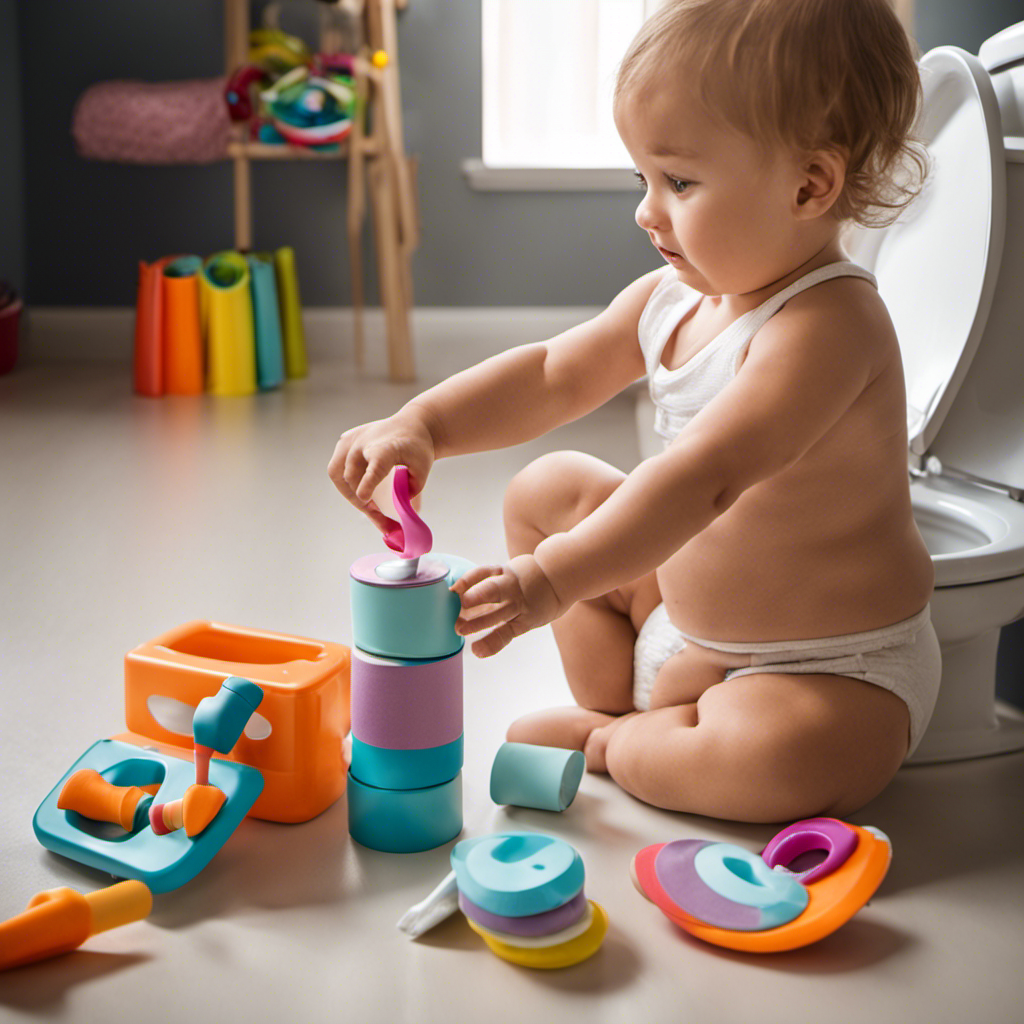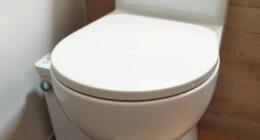Oh boy, have I got a solution for you! If you’re sick and tired of that incessant sound of your toilet running, then listen up.
I’ve got all the tips and tricks you need to put an end to this annoying problem once and for all. From identifying the culprit to making the necessary adjustments, I’ll guide you step by step on how to fix your toilet and restore peace and quiet in your bathroom.
So, let’s get started, shall we?
Key Takeaways
- The most common cause of a running toilet is a faulty flapper valve.
- A worn out flapper can lead to continuous water flow from the tank to the bowl.
- Repairing the flapper valve can save water and eliminate the sound of a running toilet.
- Other potential problems that can cause a running toilet include a faulty fill valve, clogged toilet bowl, leaking toilet base, and fluctuating water levels.
Common Causes of a Running Toilet
One of the most common causes of a running toilet is a faulty flapper. When the flapper doesn’t seal properly, water continuously flows from the tank into the bowl, resulting in a running toilet and unnecessary water wastage.
The flapper is a rubber valve located at the bottom of the tank, which opens to allow water to flow into the bowl when you flush. To fix this issue, I recommend identifying the flapper valve problem.
This can be done by removing the tank lid and observing the flapper’s condition. Look for signs of wear and tear, such as cracks or deterioration. If the flapper appears damaged, it’s important to replace it to restore the proper functioning of your toilet and prevent water wastage.
Identifying the Flapper Valve Issue
To fix the issue of your toilet continuously running, the first step is to identify if the problem lies with the flapper valve. The flapper valve is a crucial component that regulates the flow of water from the tank to the bowl. If it is worn out or damaged, it can cause water to continuously leak, resulting in a running toilet.
Signs of a worn out flapper include water constantly running into the overflow tube, a weak flush, or a toilet that won’t stop running even after flushing. To repair the flapper valve, you will need to turn off the water supply, remove the old flapper, and replace it with a new one. This simple fix can save you water and prevent the annoying sound of a running toilet.
Once the flapper valve is repaired, we can move on to adjusting the water level in the tank.
Adjusting the Water Level in the Tank
After repairing the flapper valve, you can easily adjust the water level in the tank to ensure proper functioning of your toilet. Here are four steps to help you adjust the water level:
-
Replacing the float mechanism: Start by turning off the water supply valve and flushing the toilet to empty the tank. Remove the old float mechanism and install a new one according to the manufacturer’s instructions.
-
Adjusting the toilet flush handle: Locate the adjustment screw on the toilet flush handle. Turn the screw clockwise to lower the water level or counterclockwise to raise it. Flush the toilet and check if the water level is adjusted properly.
-
Observing the water level: Once the adjustment is made, observe the water level in the tank. It should be approximately 1 inch below the top of the overflow tube.
-
Testing the toilet: Flush the toilet a few times to ensure that the water level remains consistent and the toilet doesn’t run continuously.
By following these steps, you can easily adjust the water level in your toilet tank and prevent it from running.
Now, let’s move on to fixing a faulty fill valve to address any other potential issues.
Fixing a Faulty Fill Valve
If the water level in your toilet tank is not adjusting properly, you may have a faulty fill valve that needs to be fixed. A faulty fill valve can cause your toilet to constantly run, wasting water and potentially leading to a higher water bill.
To fix this issue, you can follow these steps:
-
Start by turning off the water supply to the toilet. This can usually be done by turning the valve located on the wall behind the toilet.
-
Next, remove the lid of the toilet tank and locate the fill valve. The fill valve is responsible for refilling the tank after each flush.
-
Inspect the fill valve for any signs of damage or wear. If you notice any issues, it may be necessary to replace the fill valve.
-
To replace the fill valve, first, disconnect the water supply line from the bottom of the tank. Then, unscrew the nut that secures the fill valve to the tank. Remove the old fill valve and install the new one in its place.
Troubleshooting Other Potential Problems
One common issue could be a clogged toilet bowl, which can be resolved by using a plunger. However, if you’re still experiencing problems with your toilet, there are a few other potential issues that could be causing it to run or leak.
Here are four troubleshooting tips to help you identify and resolve these problems:
-
Leaking toilet base: If you notice water pooling around the base of your toilet, it may indicate a faulty wax seal. This can be fixed by replacing the wax ring and ensuring a proper seal between the toilet and the floor.
-
Clogged toilet drain: A clogged toilet drain can cause water to back up and overflow. To clear the clog, you can try using a toilet auger or a drain snake to remove any obstructions.
-
Faulty flapper valve: A worn or misaligned flapper valve can cause water to continuously leak from the tank into the bowl. To fix this, you can replace the flapper valve with a new one and ensure it creates a proper seal.
-
Damaged fill valve: If the water level in your toilet tank is constantly fluctuating, it may be due to a damaged fill valve. In this case, replacing the fill valve should resolve the issue.
Conclusion
In conclusion, you can effectively stop your toilet from running and avoid the frustration of a continuously running toilet by following the steps outlined in this article.
Fixing a running toilet is like solving a puzzle. Once you identify the issue and implement the appropriate solution, the problem disappears like a magician’s trick.
With a little bit of knowledge and some handy tools, you can quickly resolve the common causes of a running toilet and restore peace and functionality to your bathroom.










